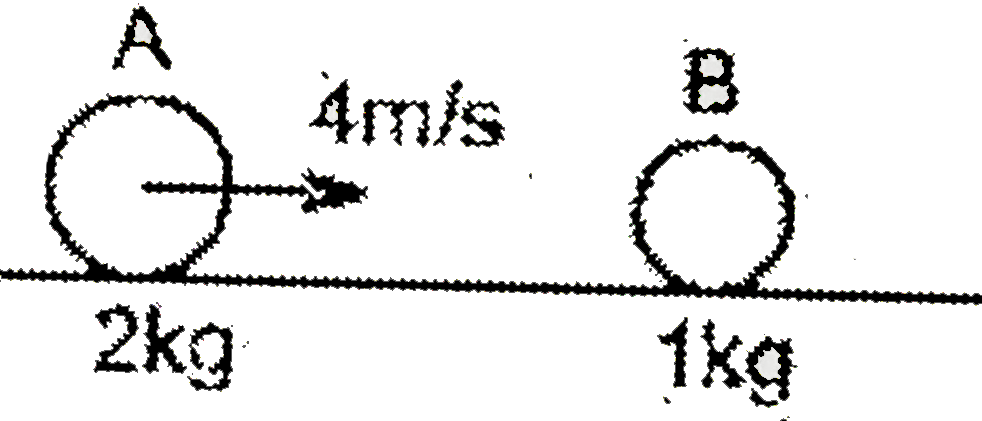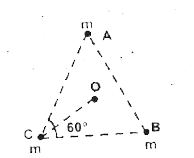The acceleration of a particle is zero as measured from an inertial frame of referecne. Can we conclude that no force acts on the particle?
Step by step video & image solution for The acceleration of a particle is zero as measured from an inertial frame of referecne. Can we conclude that no force acts on the particle? by Physics experts to help you in doubts & scoring excellent marks in Class 11 exams.
Updated on:21/07/2023Topper's Solved these Questions
- NEWTON'S LAWS OF MOTIONBook:HC VERMAChapter:NEWTON'S LAWS OF MOTIONExercise:Objective 1
Explore 14 Videos
- NEWTON'S LAWS OF MOTIONBook:HC VERMAChapter:NEWTON'S LAWS OF MOTIONExercise:Objective 2
Explore 9 Videos
- NEWTON'S LAWS OF MOTIONBook:HC VERMAChapter:NEWTON'S LAWS OF MOTIONExercise:Worked Out Examples
Explore 11 Videos
- LAWS OF THERMODYNAMICSBook:HC VERMAChapter:LAWS OF THERMODYNAMICSExercise:Short Answer
Explore 15 Videos
- PHYSICS AND MATHEMATICSBook:HC VERMAChapter:PHYSICS AND MATHEMATICSExercise:Exercises
Explore 34 Videos
Similar Questions
A particle of mass m is observed from an inertial frame of reference and is found to move in a circle of radius r with a uniform speed v. The centrifugal force on it is
View SolutionA person says that he mesured the acceleration of a particle to be nonzero while no force was acting on the particle
View Solution
Knowledge Check
STATEMENT-1 : Acceleration of a particle in a reference frame may be non- zero , even if net external force acting on the particle is zero.
and
STATEMENT : 2 In a non- - inertial reference frame, Newton's second law is not valid.AStatement -1 True, Statement -2 is True , Statement - 2 is a correct explanation for Statement -7BStatement -1 is True , Statement -2 is True , Statement -2 is NOT a correct explanation for statement -7CStatement -1 is true, Statement -2 is FalseDStatement - 1 is False , Statement - 2 is TrueThe acceleration of a particle is found to be non zero when no force acts on the particle. This is possible if the measurement is made from
Ainertial frameBnon inertial frameCbothDsome times inertial (or) some times non inertialThe acceleration of a particle is found to be non zero when no force acts on the particle. This is possible if the measurement is made from
Ainertial frameBnon inertial frameCbothDsome times intertial (or) some times non inertial
While dealing with collision between particles, you must have deal from and Inertial reference frame Often we choose that frame to be fixed in the Laboratary in which the collision is observed. So it is called the Laboratary reference frame or Lab frame From Lab frame we define an elastic collision as a collision in which KE before and after collision is conserved and a perfectly inelastic collision as a collision in which after collision the two colliding bodies have same velocity vector along the line of action of impulse during collision.
If we discusss the head-on collsion between two particles from center of mass reference frame, then the velocity of center of mass (CM) will be taken to be zero in any type of collision i.e. velocity of CM before and after collision will both be zero. Since before collsion velocity of CM was zero (as our frame is fixed to CM) and no external impulse acts, it will remain zero forever
Two particles of mass 2 kg and 1kg as shown in the figure make a perfectly inelastic collision. Then if we are dealing with center of mass reference frame, the velocity of B before collision is:

View SolutionThree particles, each of mass m are fixed at the vertices of an equilateral triangle of side length a. The only forces acting on the particles are their mutual gravitational forces. Then answer the following questions.

Force acting on particle C, due to particle A and B
View SolutionMotion of the rigid body is observed from an inertial frame of reference. Rigid body is rotating with constant angular speed about a fixed vertical axis. If we consider a particle of the rigid body not lying on its axis of rotation then net force acting on this particle is.
View SolutionMotion of the rigid body is observed from an inertial frame of reference. Rigid body is rotating with nonuniform angular speed about a fixed vertical axis. If we consider a particle of the rigid body not lying on its axis of rotation then net force acting on this particle is
View SolutionIn order to apply Newton's law of motion in an accelerated (non-inertial ) frame of reference, we make the use fo
View Solution